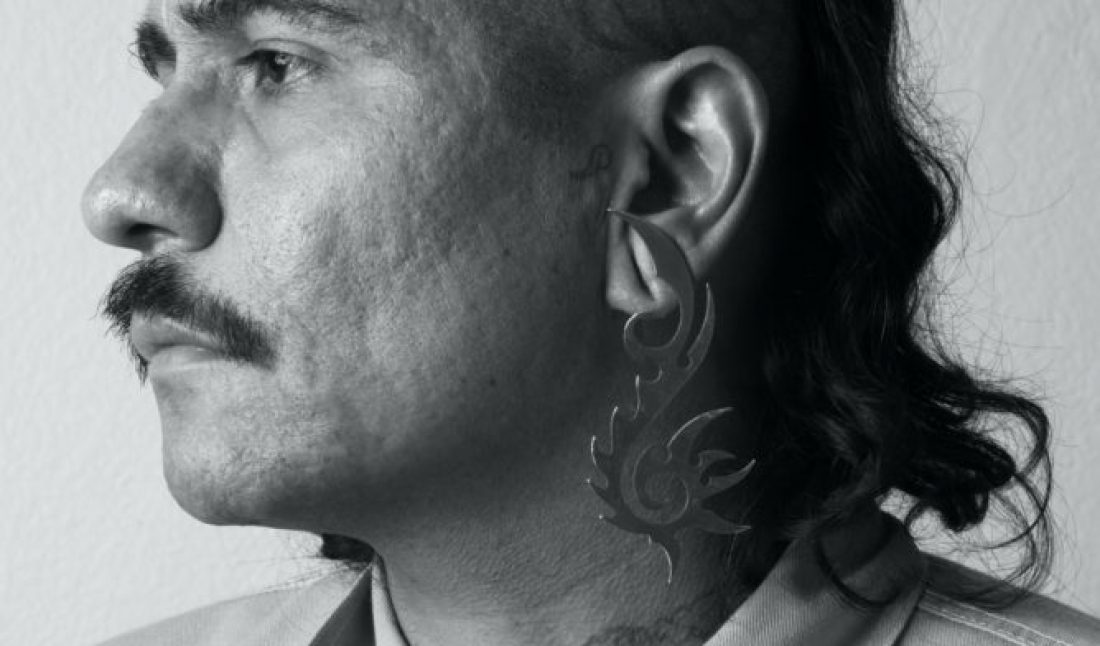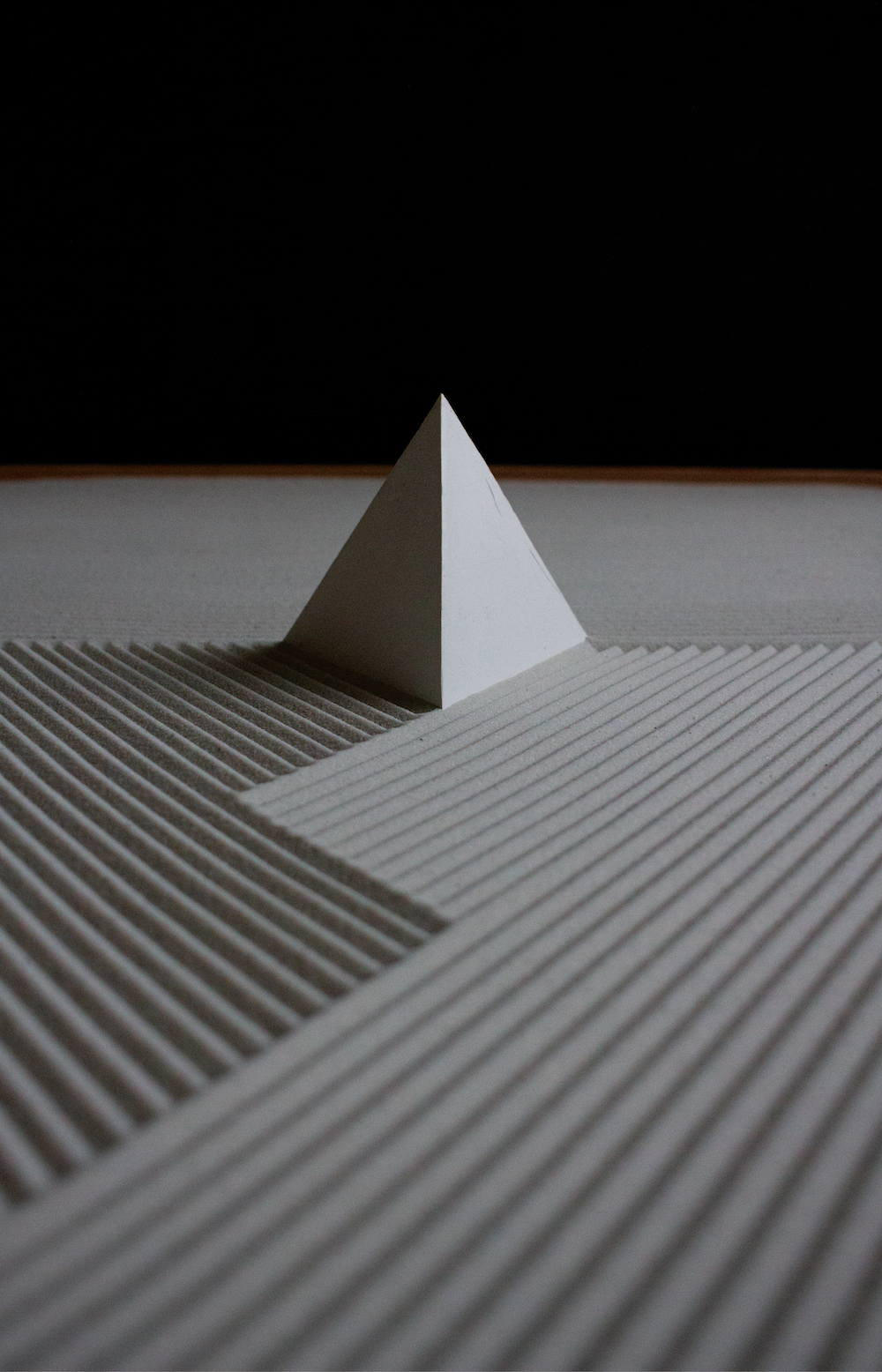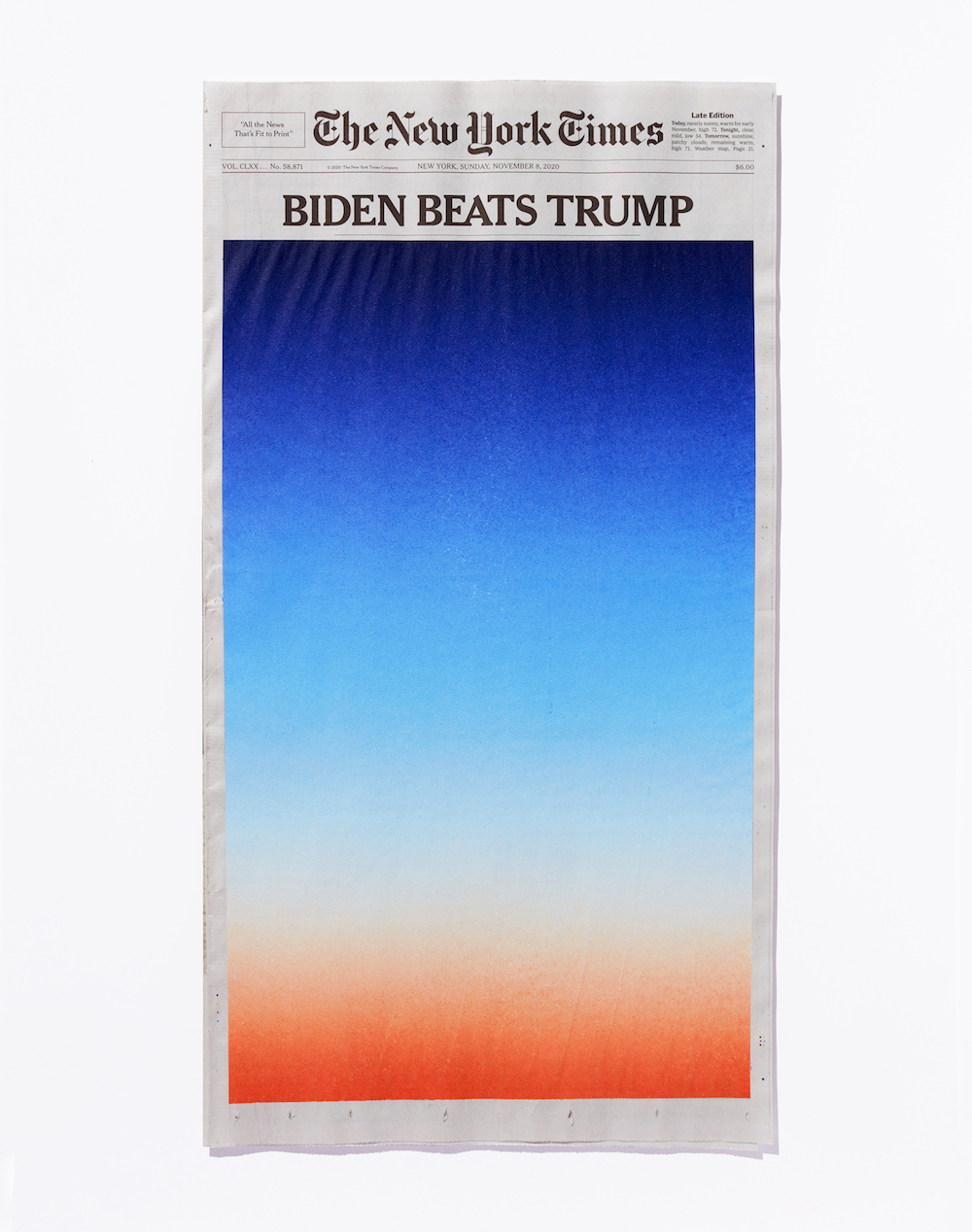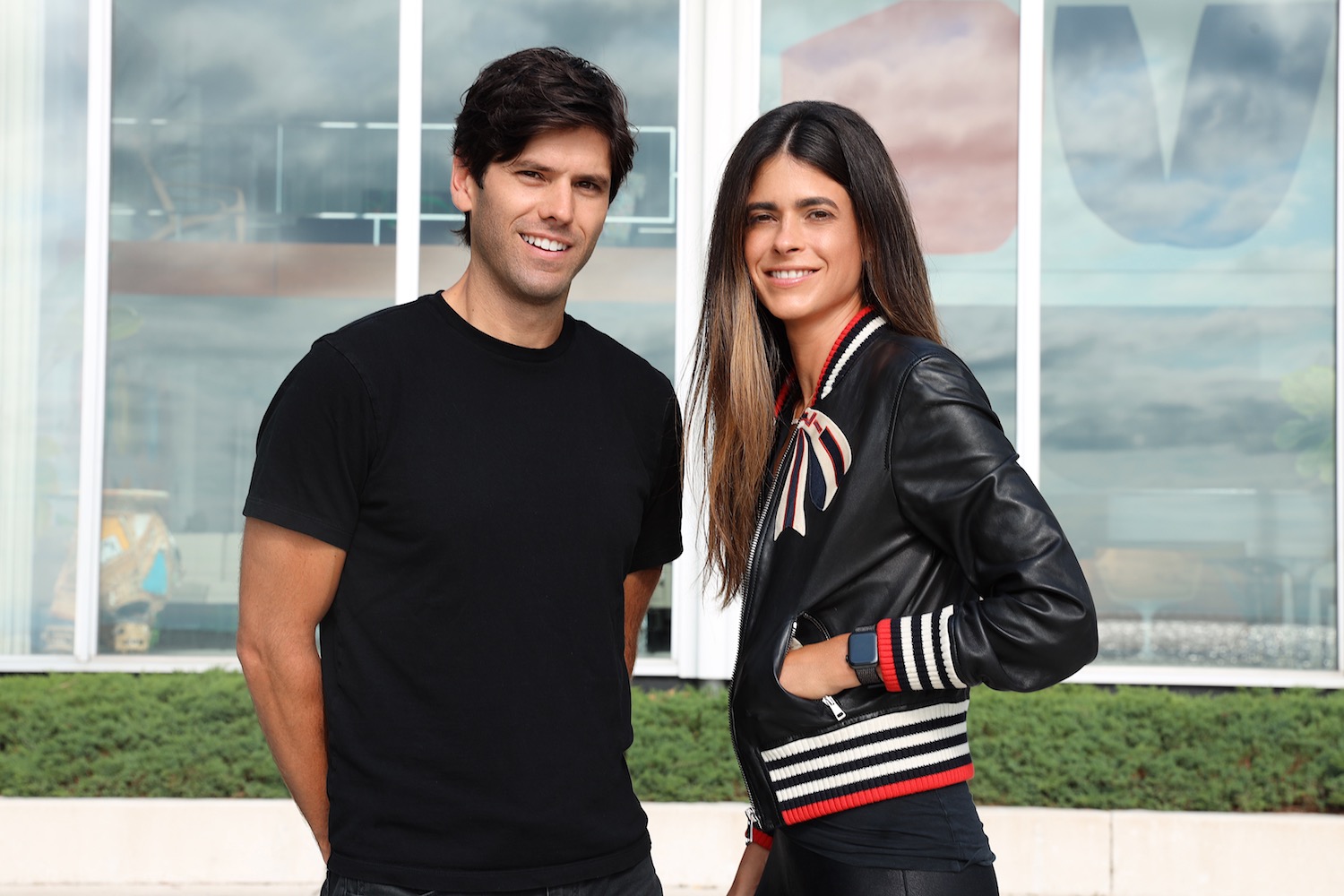For more than five years, rafa esparza has been working with adobe, a skill he learned from his father. Part of the Los Angeles–based artist’s practice has been making adobe bricks with a team, using local earth and collaborative labor. He has laid adobe bricks for his participation in “Made in L.A.” at the Hammer in 2016; created architectural structures, such as in the Whitney Biennial in 2017; and painted portraits on slabs of adobe, like in his solo show at MASS MoCA, “staring at the sun,” in 2019.
Lately, esparza has embraced a process of making adobe on his own, whether for smaller bricks or for slabs that act as canvases for his paintings. The results are currently included in a solo show at Commonwealth and Council in Los Angeles, on view through April 10. The exhibition investigates violence toward Black and Brown bodies and communities, as well as spaces for healing.
Known for politically charged performative pieces staged in front of places like the Twin Towers Correctional Facility in Los Angeles, or across from the White House in D.C., esparza took part in a major project over the July Fourth weekend last summer, with the artist Cassils. Entitled “In Plain Sight,” it launched with a series of skytyped messages spread above detention centers, immigration courts, and borders. Working with over 80 artists in partnership with grassroots organizations, the ongoing endeavor is dedicated to the abolition of immigrant detention in the U.S.
Whitewall spoke with esparza, who was recently named a 2021 USA Fellow, about challenging traditional white cube spaces.
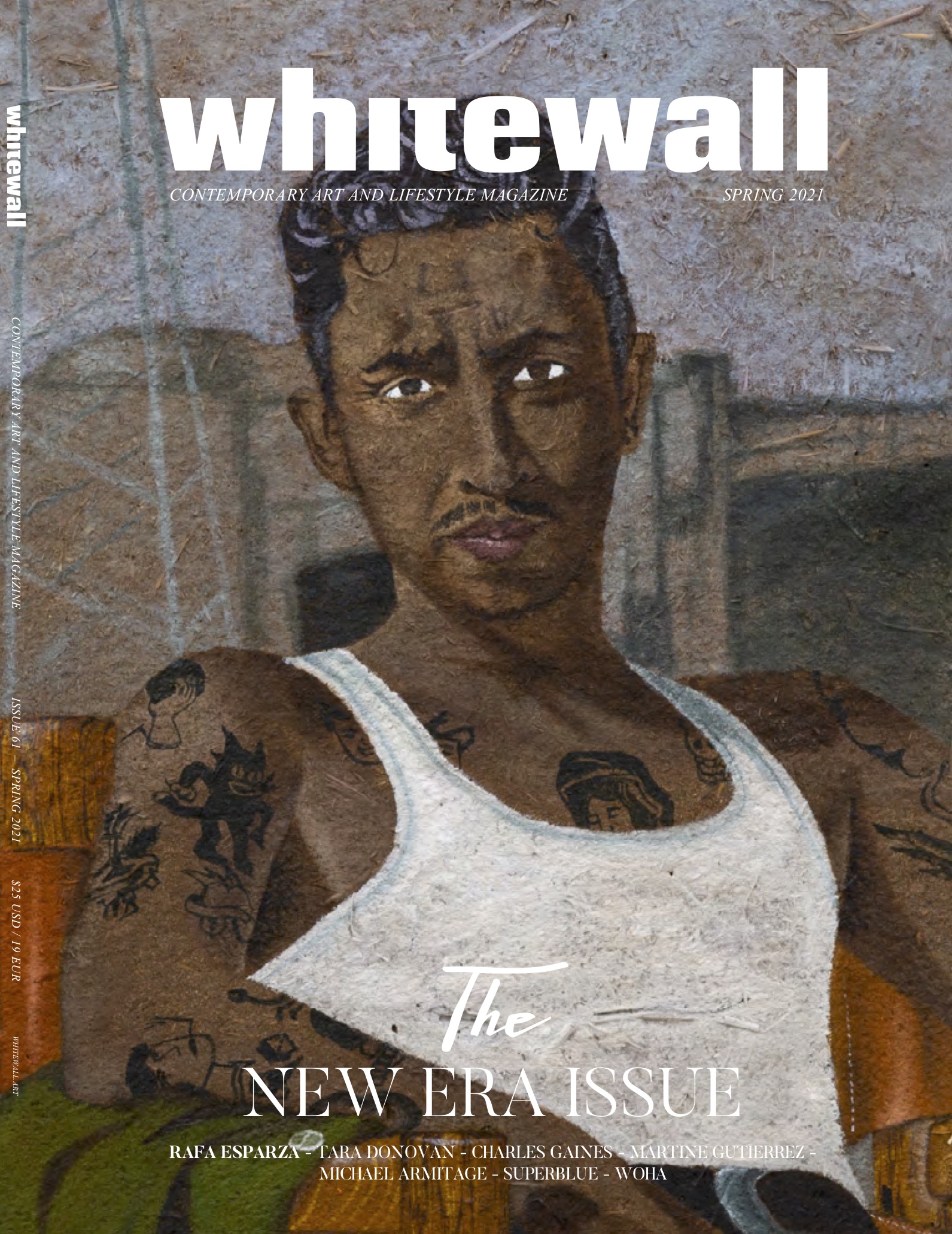 rafa esparza, “Chumash Chair,” 2020, South Willard, Los Angeles, CA, photo by Grant Guiterrez, courtesy of the artist.
rafa esparza, “Chumash Chair,” 2020, South Willard, Los Angeles, CA, photo by Grant Guiterrez, courtesy of the artist.
WHITEWALL: What was the starting point for your solo exhibition at Commonwealth and Council?
RAFA ESPARZA: The show was initially set for last year, sometime in March. For a while I’d been looking at photographs from the Chicano Moratorium, which celebrated its 50th anniversary last year. It was an event where Chicano activists and Mexican Americans marched against the Vietnam War in 1970. The protests were met with violence from the police. It was one of the largest gatherings of Mexican American folks in the country, and a very important news reporter from the L.A. Times, Ruben Salazar, was hit by a teargas canister that was blindly shot into a bar he was in by a police officer. He was hit in the head by the projectile and died. I’d been looking at these photographs and looking at these images that were showing people actively resisting violence in terms of war and the way that the police were engaging with them. I’d been inspired by these images.
We were going to postpone the show, and since experiencing the uprisings that happened all over the world and here in Los Angeles, I’ve been thinking a lot about the cyclical nature of state-sanctioned violence against communities of color, and specifically Black and Brown communities in Los Angeles. I’ve been thinking about what that does to our communities, and our bodies, how we experience this violence, not only physically in these moments of protests and resistance but systemically through the prison industrial complex. I’ve had family members that have lost a lot of years to the system and have experienced very personally the kind of labor that entails to support family members or loved ones who are caught in the system. So this work is reflecting on how Brown bodies are undone by violence.
I’m also thinking about how our bodies are restored, how we support each other, how our communities are made whole again. The work that I’m making is all against adobe surfaces that I’ve been working on for a little bit over five years now. I’ve come to build a relationship with adobe as a material that could function as a platform, as a context for ideas that at times are in conflict with traditional white cube spaces.
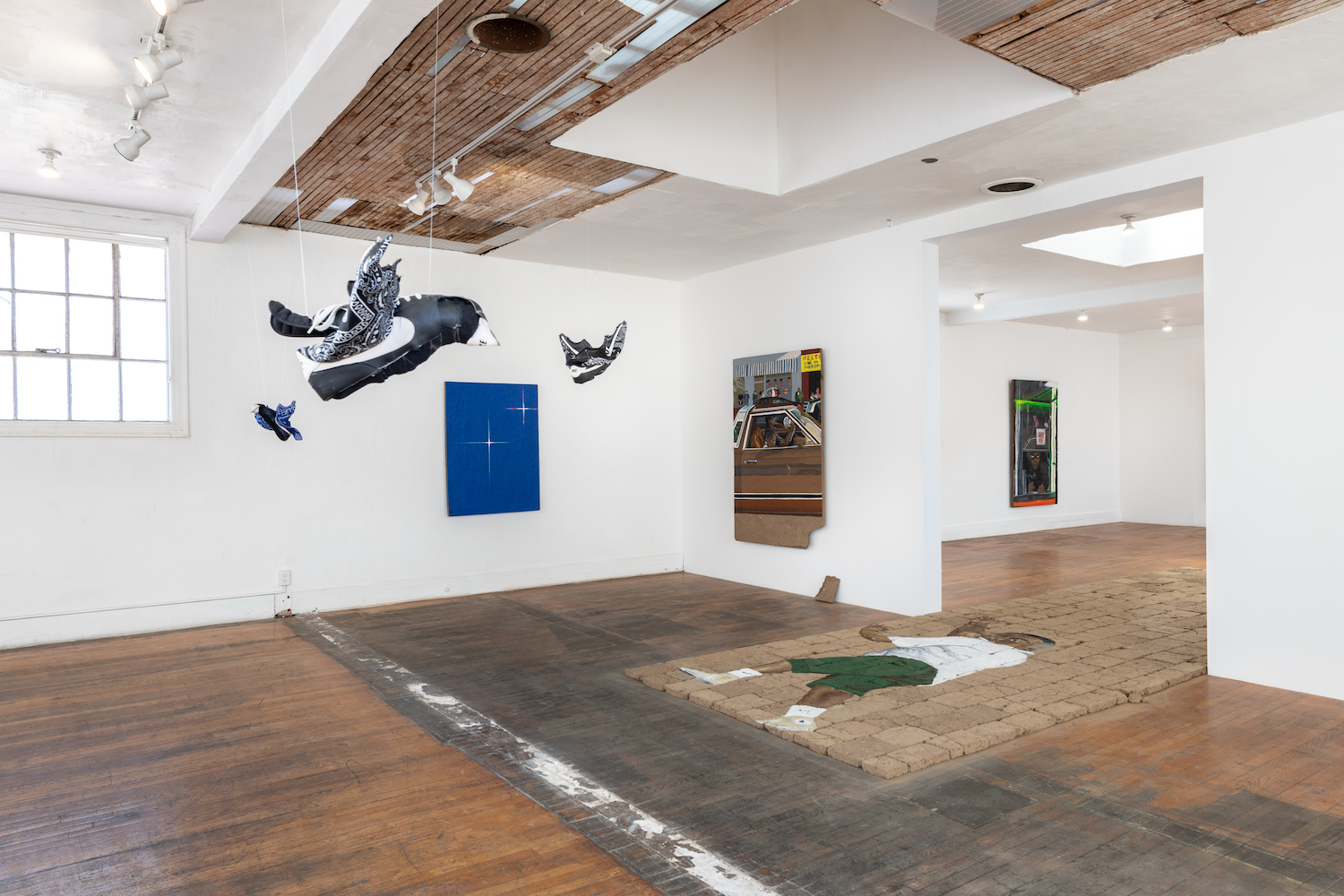 Installation views, “rafa esparza: keeping,” 2021; photo by Ruben Diaz, courtesy of the artist and Commonwealth and Council, Los Angeles.
Installation views, “rafa esparza: keeping,” 2021; photo by Ruben Diaz, courtesy of the artist and Commonwealth and Council, Los Angeles.
WW: What will that look like?
RE: A centerpiece to the show is going to be an adobe paved floor that a mural will be painted on. So folks will have to walk across this floor to get to experience the other work in the gallery. I’m thinking a lot about the Sistine Chapel and a body’s relationship to that kind of painting, to that kind of space, this heavenly mural that is so grand and overwhelming. I’ve never been and only seen in photographs, but it always emits this godly or heavenly presence. I’m thinking about, in a similar way, how the ground could function in relationship to that—this floor that could have the same kind of space that a ceiling has and the same kind of value in terms of the depth of the sky and the depth of the ground. When we think about the sky and heaven, we think about where the spirit or the afterlife may exist. Whereas in the ground, bodies actually do exist. And philosophically there are cultural stories of where a spirit could exist in the afterlife.
I’m thinking about this mural on the ground as a way to figure bodies in relation to some of the research and reading I’ve been doing in relationship to violence. The mural is a figuring of bodies that are both represented in such a way that they could be flying or falling into this brown space.
WW: Once viewers have walked across this mural, what will they encounter?
RE: The work that will exist on the perimeters of the gallery will be also painted against these adobe panels that I’ve made. These are portraits of people in my community and from my neighborhood, from my family, friends, some of my peers. These are people that feel whole to me. I know them and they are active in creating spaces of care and are proposing practices of care in very intimate ways, and very public ways.
I’m working from photographs made in collaboration with the people that I’m painting. Some that have felt safe to, I photographed myself, and some I’ve given a prompt to, and they sent me a selfie or someone has photographed them. It’s a very simple prompt, asking them to think about a space where they feel at peace, at calm, where they feel safe, where they feel empowered.
I’m thinking about the panels as being spaces where our bodies are restored. Whereas the floor is a place where violence is undoing our bodies, the panels on the wall become these restorative spaces.
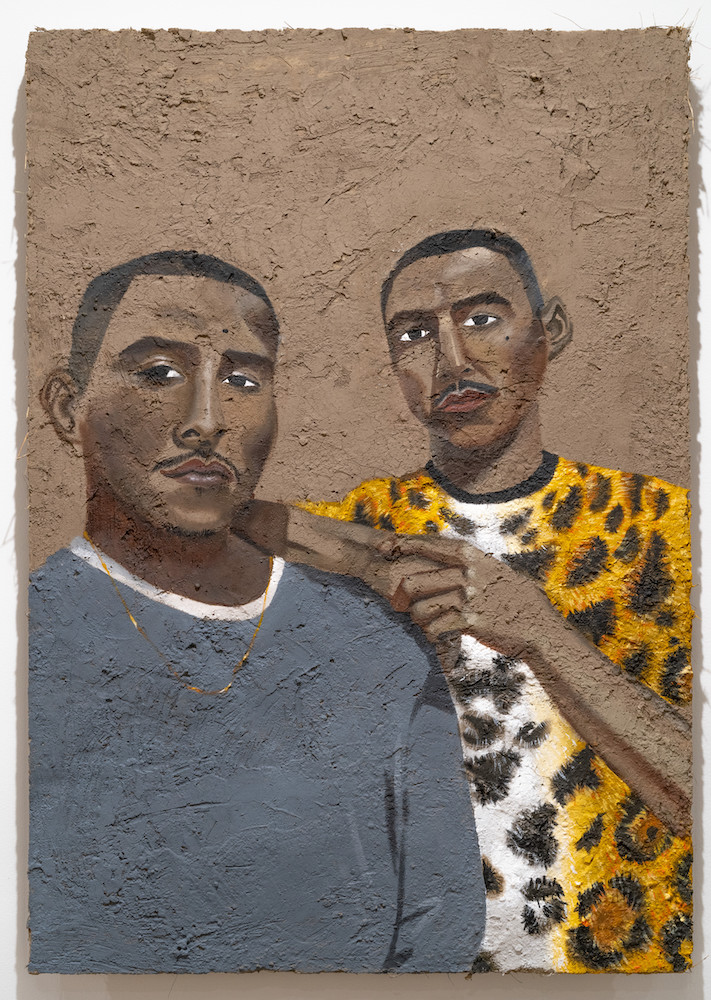
Rafa Esparza, Hector and Jose Polio as Hero Twins:
Hunahpu and Xbalanque, 2019
Acrylic on adobe panel (local dirt, horse dung, hay,
Hoosic River water, chain-link fence, plywood)
WW: The portraits are so arresting. As you said, you’ve been working for over five years with the adobe material. What made you then think of making portraits with it and on that surface?
RE: It took a while for me to even paint a color field painting on them. I think it was having to sit with the material as a panel, as opposed to a brick, for maybe about a year and a half before deciding to make them with paint. Because of my relationship to space but also knowing where the dirt comes from, having molded it with my hands or with a team of people that I’ve worked with in the past.
I was pondering these panels as both landscapes and portraits before I even marked them. When I had an opportunity to show an adobe panel work as part of a show that Risa Puleo showed at the Bemis Center back in 2018—the show was titled “Monarchs: Brown and Native Contemporary Artists in the Path of the Butterfly”—I did a self-portrait, and it was a panel that was composed of dirt I collected from Elysian Park. It is a popular gay cruising park here in Los Angeles I used to frequent as a late teenager into my early twenties. It was the first time I made a panel. I didn’t know what I was doing; I just knew I wanted to make a surface I could paint a portrait of myself in.
I felt like I could address a landscape through this kind of experiment of making a surface that I have a relationship to, that I could paint a portrait of myself into. This relationship to space carries over from my performance practice and was definitely informing the way I was approaching marking these panels initially.
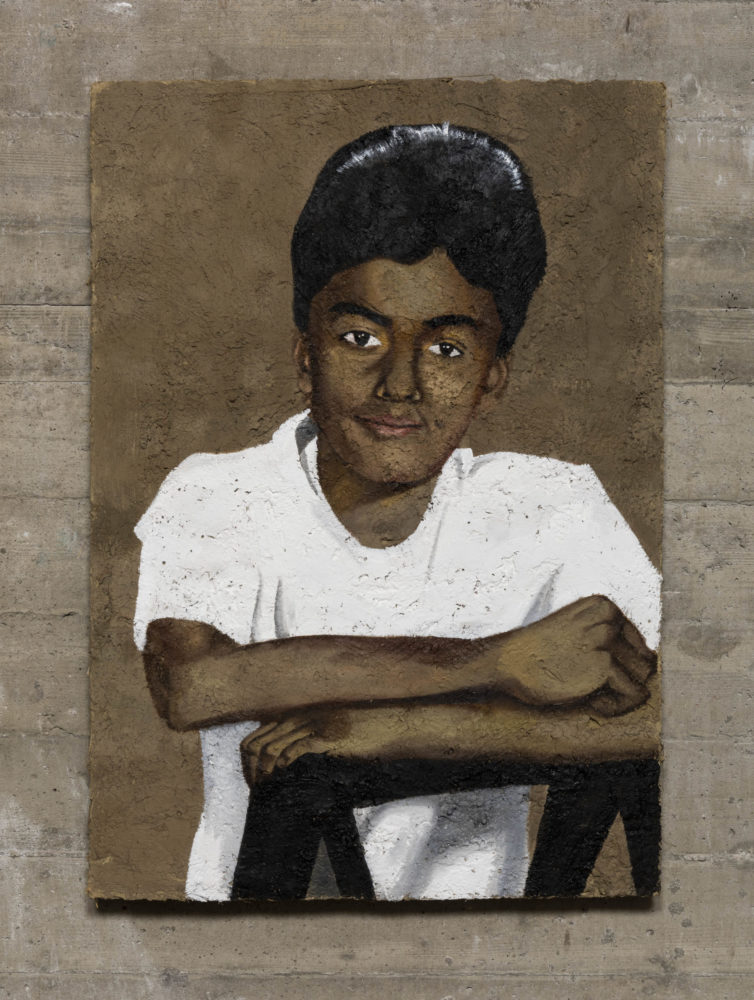 rafa esparza, “thanks for staying alive Fern.1994,” 2019-20; photo by Ruben Diaz, courtesy of the artist and Commonwealth and Council, Los Angeles.
rafa esparza, “thanks for staying alive Fern.1994,” 2019-20; photo by Ruben Diaz, courtesy of the artist and Commonwealth and Council, Los Angeles.
WW: How does it relate to your performance practice?
RE: In my performance practice, visiting a site over a period of time is something that’s very formative. So that’s where painting a portrait came from, acknowledging my presence in a very specific space and wanting to work against a surface that speaks to me. I felt like I could ground a conversation and contextualize an image in the way that a white gesso canvas can’t.
WW: How does collaboration fit into both your performance practice and these portraits, which as you said, you see as a conversation? And has it been difficult to collaborate over the past year given the pandemic?
RE: Yes, absolutely. I’ve continued to do some performative collaborative works, but working with adobe and painting on adobe has been happening in a timely manner because I’ve been intentionally pulling back from making collaborative bricks and panels. I’ve been scaling back, even on the dimensions of the bricks. I’ve been working on this on my own and attempting to reevaluate my relationship to adobe and wanting to establish a one-to-one relationship with it. That kind of intimate way of working with the material is definitely an energy and a relationship that I have with the painting.
The conversations that I have with the people that I’m painting are not collaborative to the extent that my performances are, but they do feel very important in terms of how we both decide to represent each person.
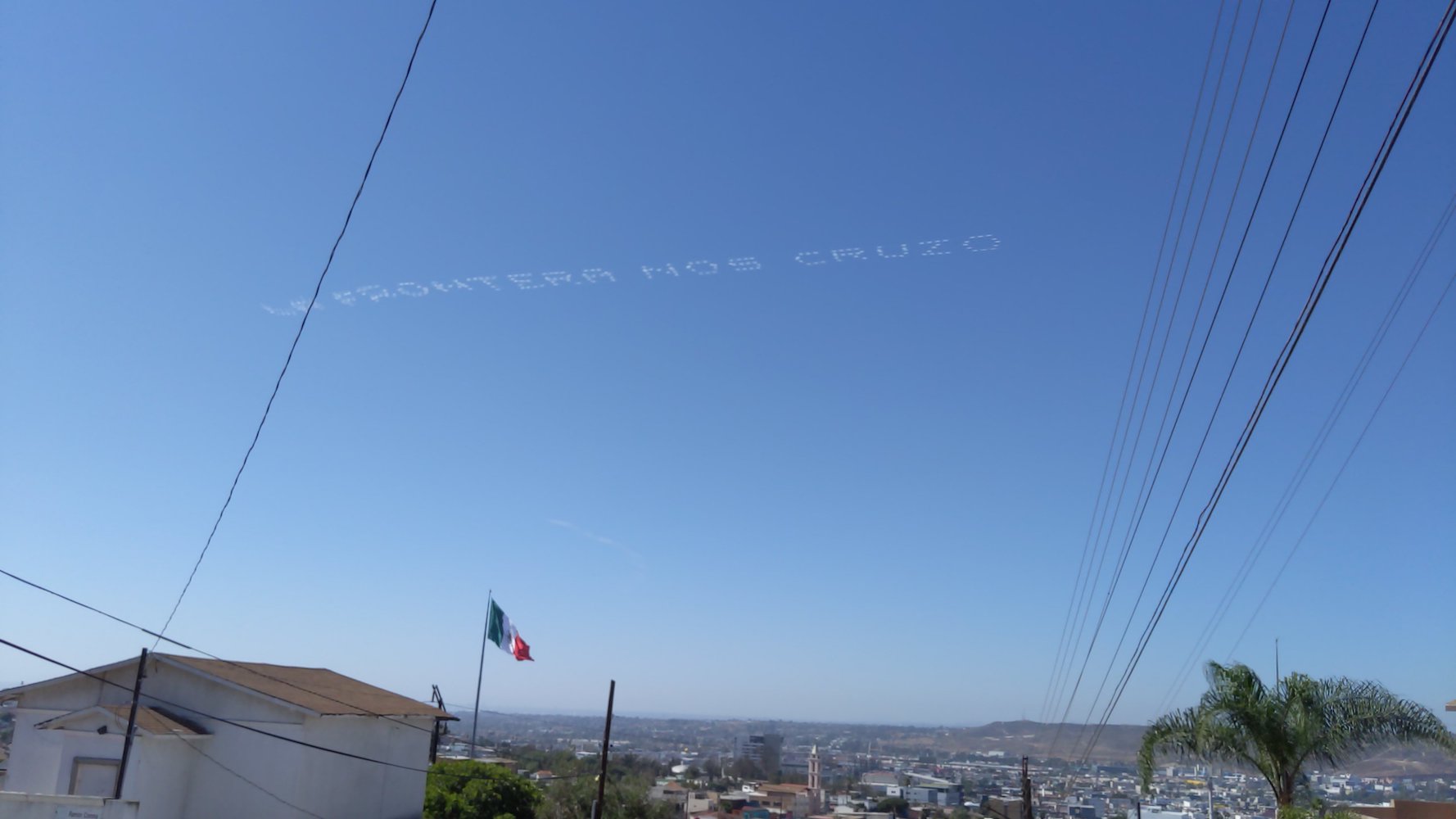 “LA FROTERA NOS CRUZO” by rafa esparza, Cross Border Xpress CBX on July 3 2020, Tijuana MX; courtesy of the artist.
“LA FROTERA NOS CRUZO” by rafa esparza, Cross Border Xpress CBX on July 3 2020, Tijuana MX; courtesy of the artist.
WW: You and the artist Cassils launched a major ongoing project, “In Plain Sight,” last summer, in collaboration with over 80 artists and organizations drawing attention to immigrant detention and America’s culture of incarceration. What was the experience like letting this out into the world and how do you see this project continuing?
RE: Cassils and I have expressed to each other how much we both grewfrom working on a project like this in terms of the scale of the work—notonly the physical presence of the action of skytyping but working withsuch a large cohort of 80 artists, as well as the coalition of immigrantjustice organizations and “In Plain Sight” team. We started this projectwith a very ambitious idea and zero funds.
Cassils led the way in terms of us fundraising and ensuring that we had the funds and partnerships to be able to manifest this project. I’ve had lots of experiences of collaborating with folks, but this is something that had to evolve and progress in the midst of a pandemic. It was also a project in communications in many regards.
Skytyping was a performance action that worked alongside an online campaign that led people to a website where they could learn about immigrant detention, the different organizations that have been working to help folks in detention, and ways to get involved. There were various calls to action that people could participate in. We didn’t want to just let people know of what was happening, but we wanted people to find a way of getting involved.
We still are working on the docuseries, and Cassils and I are discussing other public art projects related to “In Plain Sight.” We have some ideas cooking up for this year.
WW: Speaking of public work, you were also shortlisted for the High Line Plinth in New York. Can you tell us about the proposed sculpture KT Hyperspace?
RE: I was thinking a lot about my own experience. When I was invited into the Whitney Biennial in 2017, that was the first time that I’d been to New York. I was thinking a lot about trying to remember my impression of the city when I visited it then. I remember feeling after a few days the weight and the density of the city, the wealth in Manhattan in particular and kind of the overwhelmingness of all of those things.
KT Hyperspace proposes to look elsewhere and look deeper into other histories, other modernities in which art has evolved alongside the contemporary art world that we know of today, by taking this an ancient monument that’s of the Americas and warping it. The object is a San Lorenzo Olmec head that’s warped as if it’s at the apex of a wormhole.
In terms of the material, I included in my proposal to visit a couple of sites where you are able to see the different layers of the earth’s crust, in particular the KT boundary, that corroborates the theory that asteroids and meteors hit the earth, initiating these extinction level events. The KT boundary becomes this clay line in the earth’s crust that divides—all the dinosaur remains are found beneath that line, and the mammals that are our ancestors, their remains appear above that line. I want to visit these different sites and see if I could include some of that clay as part of the adobe that this warped Olmec head will be made of.
I’m thinking about this kind of material that speaks to a time that stretches beyond humanity as a way to think about the histories that we uphold and why we uphold them. I’m wanting to gesture toward a culture that I think has a very distinct values as it relates to land, nature. Returning this object that is in fact from the Americas, in this warped time-traveling manner to New York, feels exciting to me.
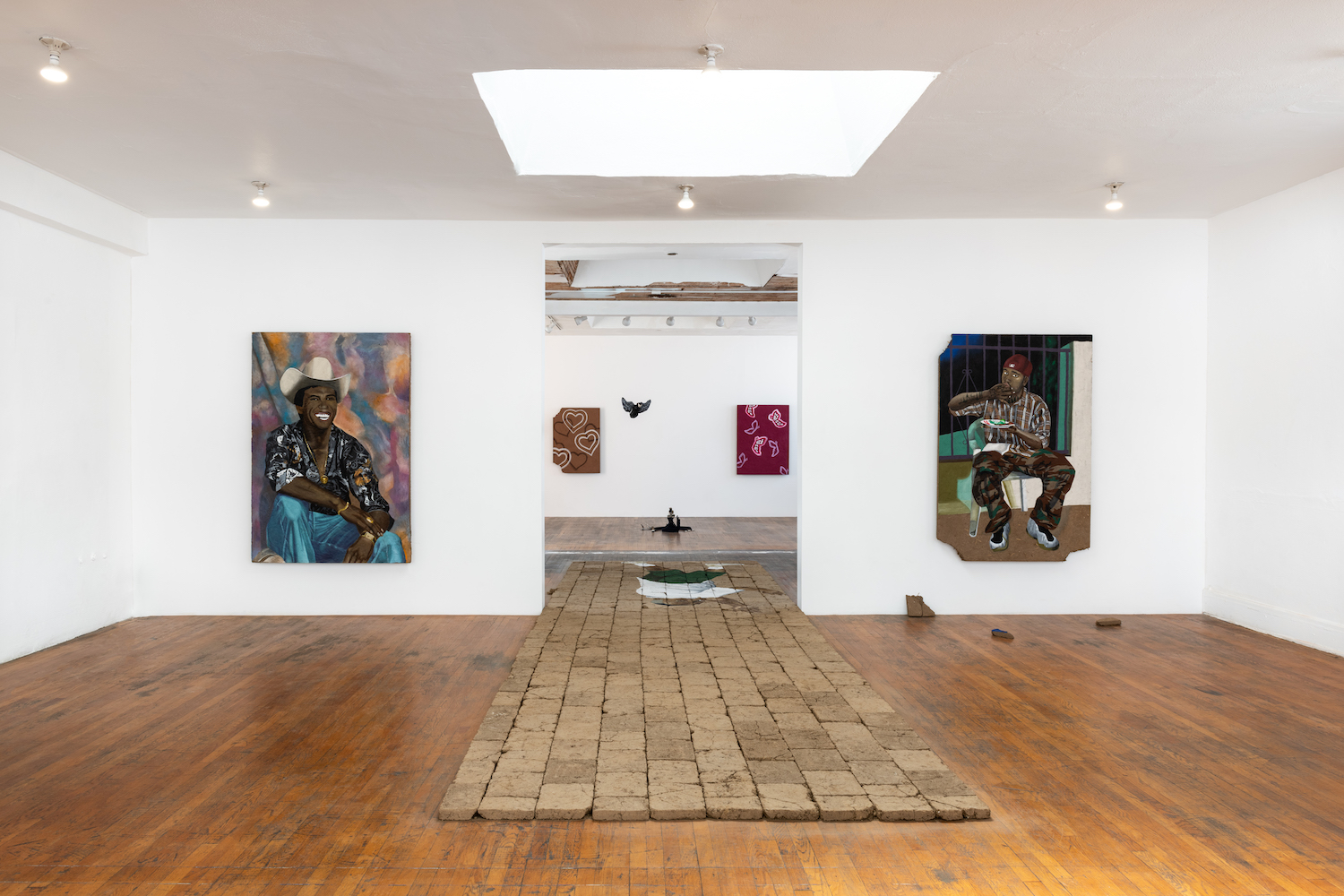 Installation views, “rafa esparza: keeping,” 2021; photo by Ruben Diaz, courtesy of the artist and Commonwealth and Council, Los Angeles.
Installation views, “rafa esparza: keeping,” 2021; photo by Ruben Diaz, courtesy of the artist and Commonwealth and Council, Los Angeles.






